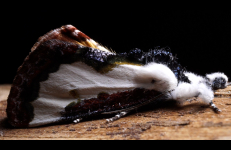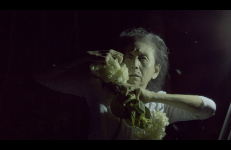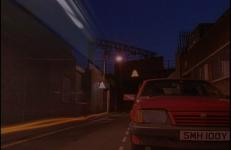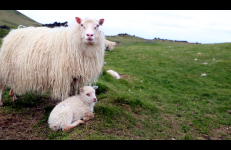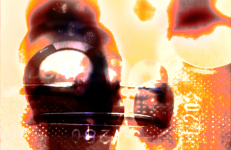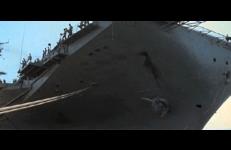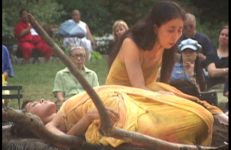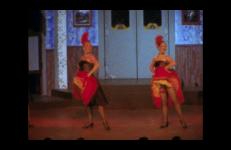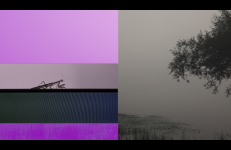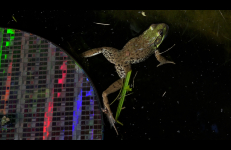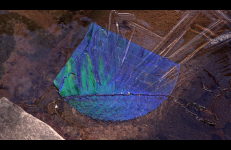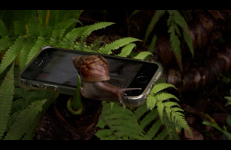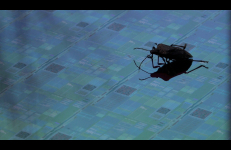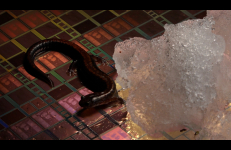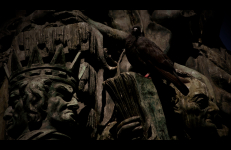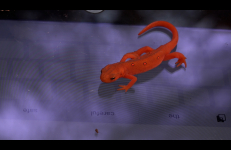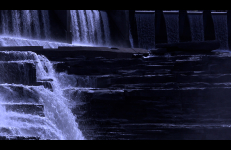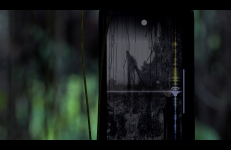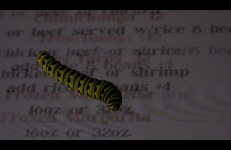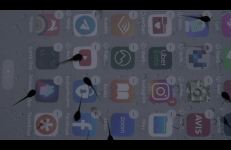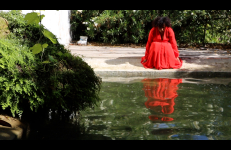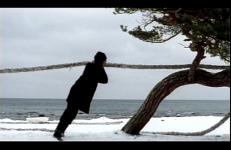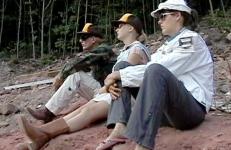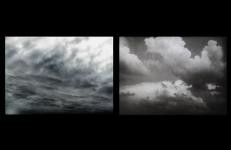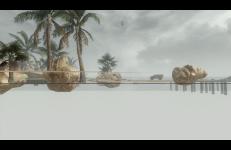The Night Visitors is a movie about moths. In large and small fragments, looking both inward and out, through a critical lens that is by turns social and personal, the film closely examines these under-known creatures. While The Night Visitors is interested in moths as organisms, with fascinating life histories, staggering biodiversity, and a functional importance as indicators of climate change and habitat degradation, its engagement with them is not primarily entomological.
Environment
Collaboration with Joseph Scheer (print making artist specializing in moths) and Rebekkah Palov.
Choreography and editing by Eiko Otake, assisted by Rebekkah Palov.
Eiko is deeply grateful to Institute for Electronic Arts, Alfred University.
Nocturne is a 5-minute film shot entirely at night in deserted streets of London. The film attempts to find images of the city that reveal the presence of the past, or the presence of the dead, hinting at a concealed history. The deserted streets around the east end of London and Docklands reflect an echoic city filled with shadows. Nocturne is composed of long static viewpoints, each shot slowly unfolding in time as though by looking long enough the city's secrets will be revealed.
The video series Not Once began with the recording of personal stories by local Icelanders, about specific locations or a sense of place. The resulting stories vary greatly, from incredibly intimate and vulnerable, to more commonplace and closer akin to tourist experiences. Hechtman then visited the locations in order to record video footage on site. When the audio and video are coupled together, a new sense of personal narrative is created, transforming one experience into another, and ultimately creating a third: the viewer’s experience.
Not Once includes:
This is the arche-fossil and the presence of the decay-image rate of his radioactive nucleus as an omen of interesting times. Part of the Scattered Geology Audiovisual series.
The Observers portrays one of the world's last staffed weather observatories in two different seasons. Extreme and unpredictable, the land and sky of Mount Washington, New Hampshire form a varying frame for a climatologist as she goes about the solitary and steadfast work of measuring and recording the weather.
Offering was co-commissioned by Dancing in the Streets (New York), the Walker Art Center (Minneapolis, where the proscenium version premiered January 9, 2003) and the University of Arizona (Tucson).
Offering is a ritual of regeneration after loss. People everywhere have lost ideals and landscapes that were dear to them. Offering was originally developed as a mobile outdoor work. This transportable dance or living site "installation" can be brought into communities to serve a communal need for a ritual of mourning.
The urge to relieve a winter valley of permanent shadow and find fortune in alluvial gravel are part of a long history of desire and extraction in the far Canadian north. Cancan dancers, curlers, ore smelters, former city officials and a curious cliff-side mirrored disc congregate to form a town portrait. Shot on location in Dawson City, Yukon Territory.
Our Non-Understanding of Everything is a series of 16 videos that explore how the structures of architecture, semiconductors, and circuits become forms of expression reflecting hierarchies, cognitive processes, and relationships to the natural environment.
Our Non-Understanding of Everything is a series of 16 videos that explore how the structures of architecture, semiconductors, and circuits become forms of expression reflecting hierarchies, cognitive processes, and relationships to the natural environment.
Our Non-Understanding of Everything is a series of 16 videos that explore how the structures of architecture, semiconductors, and circuits become forms of expression reflecting hierarchies, cognitive processes, and relationships to the natural environment.
Our Non-Understanding of Everything is a series of 16 videos that explore how the structures of architecture, semiconductors, and circuits become forms of expression reflecting hierarchies, cognitive processes, and relationships to the natural environment.
Our Non-Understanding of Everything is a series of 16 videos that explore how the structures of architecture, semiconductors, and circuits become forms of expression reflecting hierarchies, cognitive processes, and relationships to the natural environment.
Our Non-Understanding of Everything is a series of 16 videos that explore how the structures of architecture, semiconductors, and circuits become forms of expression reflecting hierarchies, cognitive processes, and relationships to the natural environment.
Our Non-Understanding of Everything is a series of 16 videos that explore how the structures of architecture, semiconductors, and circuits become forms of expression reflecting hierarchies, cognitive processes, and relationships to the natural environment.
Our Non-Understanding of Everything is a series of 16 videos that explore how the structures of architecture, semiconductors, and circuits become forms of expression reflecting hierarchies, cognitive processes, and relationships to the natural environment.
Our Non-Understanding of Everything is a series of 16 videos that explore how the structures of architecture, semiconductors, and circuits become forms of expression reflecting hierarchies, cognitive processes, and relationships to the natural environment.
Our Non-Understanding of Everything is a series of 16 videos that explore how the structures of architecture, semiconductors, and circuits become forms of expression reflecting hierarchies, cognitive processes, and relationships to the natural environment.
Our Non-Understanding of Everything is a series of 16 videos that explore how the structures of architecture, semiconductors, and circuits become forms of expression reflecting hierarchies, cognitive processes, and relationships to the natural environment.
Our Non-Understanding of Everything is a series of 16 videos that explore how the structures of architecture, semiconductors, and circuits become forms of expression reflecting hierarchies, cognitive processes, and relationships to the natural environment.
The installation created by Monica de Miranda in collaboration with Teatro GRIOT accompanies the play Os Negros. It includes a photographic and video exhibition that abstractly uses the images inspired by the play. The work is a meta-theatrical construction between documentary and fictional narratives.
Outwardly from Earth's Center is a fictitious narrative about a society on an unstable piece of land that is in danger of disappearance. The situation requires the population's collective initiative in order to secure individual survival and to allow the society to remain. The concept's background is somewhat realistic since Sandön moves approximately one meter per year.
Through a successful eBay bid in January of 2004, 1975 eteam dollars turned into 10 acres of personal U.S. property. The lot, a generic square within the larger American grid of townships, is located in the desert of Nevada. The closest settlement, Montello, "The town that refuses to die", is eight miles away, and the almost abandoned airbase Wendover, at the edge of the Salt Flats, is located about 30 miles SE. It's the 10-acre lot and its surroundings that started the eteam's search for solutions to problems, which were created by big systems that had made some small mistakes.
The four‐part cycle Parallel deals with the image genre of computer animation. The series focuses on the construction, visual landscape and inherent rules of computer-animated worlds.
“Computer animations are currently becoming a general model, surpassing film. In films, there is the wind that blows and the wind that is produced by a wind machine. Computer images do not have two kinds of wind.”
-- Harun Farocki
The four‐part cycle Parallel deals with the image genre of computer animation. The series focuses on the construction, visual landscape and inherent rules of computer-animated worlds.
"Computer animations are currently becoming a general model, surpassing film. In films, there is the wind that blows and the wind that is produced by a wind machine. Computer images do not have two kinds of wind."
— Harun Farocki




